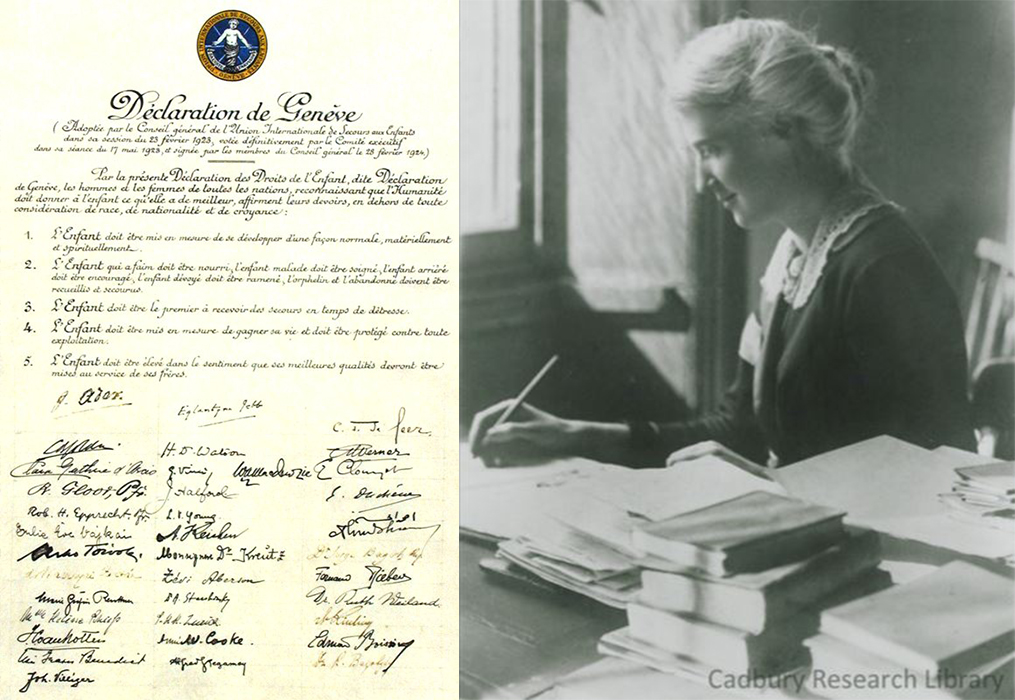The international community recognises the need to protect children
The interest in recognising children and adolescents’ rights, and its positivist evaluation in international documents, arise in the 20th century. Although children had previously been recognised as having rights as propriety. The dire situation of children after the two world wars, particularly those from less privileged backgrounds, led the international community to consider the need to protect children’s rights. The first universal declaration was the «Geneva Declaration», which was passed by the V General Assembly of the League of Nations in 1924. This document originated in the years following the First World War, when Eglantine Jebb founded Save the Children in 1919 to help all the children who were victims of the war and the Russian Revolution. Clearly protectionist, it includes five very general principles, and points out in the Prologue that the rights referred to should be understood as duties to children to be observed by men and women of all nations. It is not a specific text and its generalisations can be explained because it was drawn up at a moment in history when Human Rights were still restricted to the rights of adult males. Nevertheless, it is an important document as it sets the precedent for all the later legislation on children’s rights.

